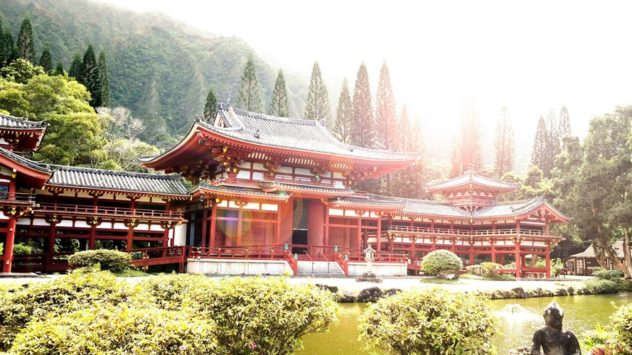Pre-Reading Questions:
- When do you usually wear a kimono?
- Are you fond of Japanese cuisine?
Vocabulary:
- magnificent /mag-NIF-uh-suhnt/
- technique /tek-NEEK/
- abundance /uh-BUHN-duhns/
- stronghold /STRAWNG-hohld/
- in spades /in speyds/
- synthetic /sin-THET-ik/
- impart /im-PAHRT/
[adjective] – causing admiration esp. because of an unusual quality such as great size or beauty
Shirley’s house has a magnificent view from her bedroom.
[noun] –a way of doing an activity that needs skill
He learned a new technique to easily pass an exam.
[noun] –the situation in which there is more than enough of something
Armenia’s abundance of grapes creates the largest winery in the world.
[noun] –a building or position that is strongly defended
The structure’s foundation has the best stronghold for earthquakes.
[idiom] –in large amounts or to a very great degree
My father had all the best characteristics in spades.
[adjective] – of or relating to products made from artificial substances, often copying a natural product
The synthetic fiber was used for her wedding dress.
[verb] – to give a feeling or quality to something, or to make information known to someone
I would like to impart the lesson I experienced from the tragedy.
Historical artworks embody the skills and the traditional techniques from the making up to the production. In Kyoto City, national treasures are exhibited in Kyocera Museum of Arts such as artifacts, handwritings, crafts, paintings, sculptures and other treasures in Kyoto. Japan’s nature entirely contributes to the artistic character of Japanese to mold prosperous history.
From farmhouses, temples to imperial palaces, Japan demonstrated how cultural architecture signifies the great artistry in their history. Nature’s abundance of timberwood was used as a stronghold in earthquakes. Using wood as foundation, houses were built straight on the ground during the Jomon period. Japanese architectural styles have adapted when western architecture began.
In the history of Japan, performing arts entirely scopes the entertainment world of theatrical play, traditional music and dance performances. A well-known classic theatrical play in Japan is ‘kabuki’ that shows dynamic styles of acting. Kabuki was awarded the title Intangible Cultural Heritage of Humanity by UNESCO. While a traditional puppet theater called ‘bunraku’ originated in Osaka performs stories like classic and tragic love, legends, tales and heroic event stories. Bunraku puppeteers control the puppets to create realistic facial expressions and actions.
Kimono features the affluent fashion of Japan in spades. Aside from being the national or traditional dress of Japan, the assorted designs and colors that signify Japan culture make wearing kimono in all occasions became popular across the country. Kimono is usually made up of silk, wool or synthetic fabric. In addition, a light-cotton kimono called ‘yukata’ with a wooden footwear called ‘geta’ were usually worn during summer and or after bathing at hot springs.
People have their own food story that they are really proud of, especially foods from their own country. In fact, restaurants around the world present different varieties of cuisine. Japanese cuisine is indeed one of the major banquets in restaurants people can enjoy. UNESCO declared Japanese cuisine as an Intangible Cultural Heritage of Humanity as it showcases impressive cooking techniques and natural ingredients over the islands. ‘Washoku’ stands for traditional Japanese cuisine, ‘wa’ means Japan and harmony, while ‘shoku’ means food and to eat that defines ingredients that are harmoniously whipped and creatively presented.
With magnificent nature and artistic hands, Japanese culture has become well-known in the world. By understanding and appreciating the cultural origin of heritage, people impart the depth of history. And having the pride to share the chance to experience Japan’s culture to others is by experiencing and rediscovering one’s own culture.
Comprehension Questions:
- What museum exhibits national treasures in Kyoto City?
- From what period did the Japanese use wood as their house’s foundation?
- What is the difference between kabuki and bunraku?
- Why does UNESCO declare Japanese cuisine as an Intangible Cultural Heritage of Humanity?
- How could people impart the depth of history?
Discussion Questions:
- From what Japan heritage mentioned above do you appreciate most? Please discuss.
- What do you mostly look for in a museum? Explain.
- From the traditional performing arts in the article, which interests you the most? Please discuss.
- Give an example of what kind of kimono should be worn on a specific occasion.
- In your own opinion, how can you impart Japan’s history to others? Please discuss.
